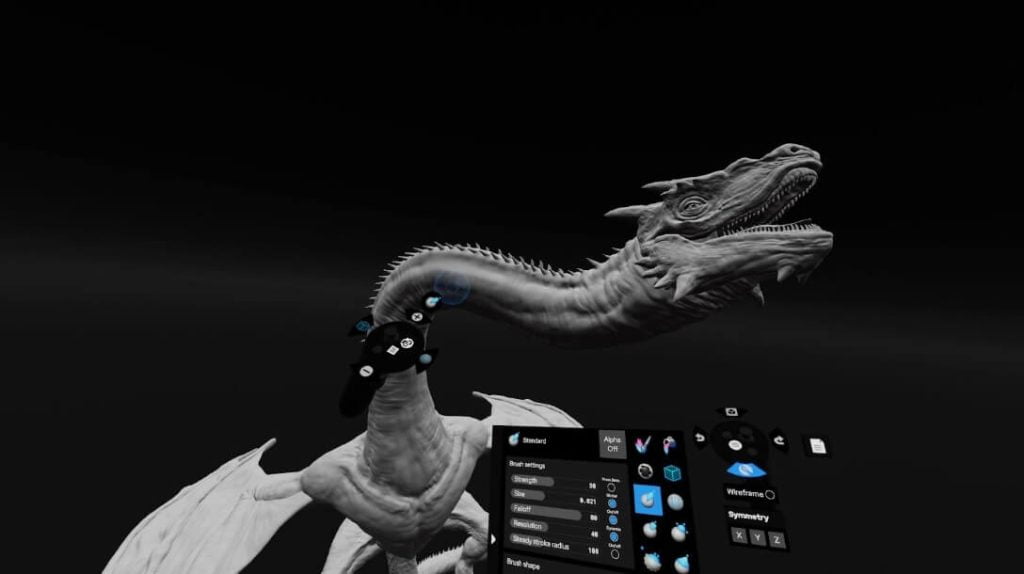4 reasons to start 3D modeling in Virtual Reality
The Shapelab team has been in touch with a number of their users, professional 3D designers, and hobby artists alike. When asked about their experience with 3D modeling in VR, here is what they loved compared to traditional 3D modeling software!

1. VR interactions and the "presence" in the digital workspace make 3D navigation intuitive.
Virtual reality provides spatial vision and an understanding of perspective, which is a huge benefit compared to traditional software. The ability to engage with the work at life size or larger gives a more accurate sense of the subject, and the freedom of movement makes navigation easier. “Being able to work in broad gestures is so much freer than scratch and turn on a tablet! I come from a traditional sculpture background, and VR lets me feel more like an artist as opposed to a technician, “ says one Shapelab user.
2. VR interactions allow you to use certain design tools and brushes more effectively
Contributing to a faster workflow. Artists use VR tools to quickly block out basic shapes much faster due to freedom of movement and size. For instance, artists found using some well-known industry standard brushes such as “Move” and “Snake Hook” to be much more effective when moving the cursor in 6 degrees of freedom thanks to the VR controllers. Others said they prefer VR when it comes to inspecting and cleaning up large and complex 3D scans. They can find and delete rogue polygons and change the topology locally much faster.
3. VR tools are handy for people with a craftsman-style background
Those who already possess hand skills can transition more smoothly to a digital era as VR provides them a more life-like sculpting experience. The Shapelab team has worked with several artists from different backgrounds to test the application. One of them is multidisciplinary sculptor and artist Tom Aust, who created intricate VR sculptures using Shapelab. Being a sculptor first, Tom came to appreciate modeling in VR, which provided him with a new medium and the ability to work without physical constraints.
“Shapelab first lured me in with dynamic tessellation, which actually greatly enhances the advantage that polygon-based sculpting already has for me over voxel-based sculpting!” he said, “but the program also impresses with a clear structure. It provides intuitive accessibility and an enormous stability and performance, even with a large polygon count.” Tom continued, “Since working with multiple objects is also possible, Shapelab feels like a manageable but solid sculpting tool, despite its early access stage.”

4. Virtual reality can offer a more enjoyable experience for beginners as well as professionals.
For example, users such as XR artists and indie game developers might try VR instead of traditional 3D software, as they feel it is a more entertaining and
intuitive way of creating. In addition, they can quickly become proficient, which gives them a sense of accomplishment.
